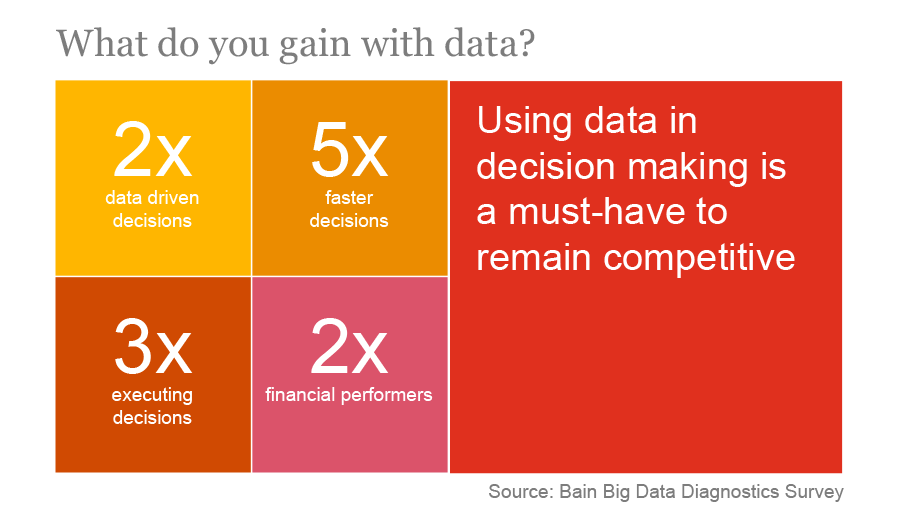

It is hardly arguable, that we live in the age of exponential growth. Besides many other things, the growth of the data volume generated by us is rocketed too (e.g. according to researches of IDC mankind doubles the data generated in every 24 months), thereby the business value potential hidden in this data is also continuously growing. If you want to manage and utilize your corporate data assets, you should design a comprehensive, enterprise-level data strategy, and you should continuously implement and update it.
There are many different definitions of the enterprise data strategy, but all agree that the basic goal of data strategy is to create and maintain an enterprise-wide strategy that ensures the adequate protection, quality, value, and utilization of corporate data assets available through harnessing data-related and data-dependent capabilities. An effective data strategy (similarly to other corporate strategies) has the following properties:
Corporate data assets can generate value for the company in many different areas:
Improving Business Decisions
In order to make good business decisions, we need to know better our customers, products, services, competitors and markets, monitor better financial and other internal processes, and effectively leverage human resources. Enterprise data assets can help to achieve these objectives.
Improving Your Operations
Proper utilization of data assets can also provide you the opportunity of optimizing your company’s processes, products and services. This could include developing or improving a more competitive product/service, but data can also help to optimize the process of product manufacturing. Some examples of utilization in different areas:
Data Monetization
Well-maintained data assets with appropriate quality can directly increase your company’s market value, but it is also possible to sell data assets to individuals and other companies.
Why do we need enterprise data strategy?
As we saw previously, the company’s data asset can create business values in many different areas. However, in the absence of comprehensive enterprise data strategy the various business and professional departments:
Who in your organization should drive the data strategy
According to our experience, building of data strategy is not primarily an IT, but a business task. This does not mean that IT managers and professionals can be left out of data strategy creation, but data assets are primarily business assets, therefore the business side should drive the building, implementation, and continuous review of the data strategy. Forbes estimates that by 2019, 90% of large corporations will employ a Chief Data Officer (CDO), whose primary task and responsibility will be the proper management of corporate data assets.
Where do you start?
